The More You Negate, The More Precise You Get: Practical Techniques for Negative Ad Targeting
Amazon Ads, whether automatic or manual, will always generate some keywords with high clicks and low conversions, commonly known as: junk traffic keywords. These keywords consume a large amount of ad budget, waste money for nothing, and may even encroach on the budget for precise keywords, which is very detrimental to long-term ad placements and product promotion. At this time, negative targeting needs to be used to eliminate these junk keywords and reduce costs while increasing efficiency.
So, when running ads, what stage is generally suitable for adding negative keywords, and how to determine whether a keyword should be negated?
What Stage is Suitable for Implementing Negative Targeting?
1. Negative Targeting in Advance When Creating Ads
For example, when initially targeting the keyword: running shoes (broad match). Before launching, based on the keyword matching model, search terms like: nike running shoes, adidas running shoes will definitely appear.
Because these terms have very high search volumes, they are more likely to get impressions and clicks on Amazon. However, for new sellers, search terms containing nike/adidas are often clicked, but due to the low competitiveness of new products, it is difficult to outperform established brands like Nike and Adidas, and other relatively mature sellers, so the conversion rate will be very low.
Therefore, it is recommended that sellers negate such terms in advance when creating ad campaigns to reduce ineffective ad spend. After the product's authority improves, you can re-launch ad groups and target these high-traffic keywords separately to gain conversions.
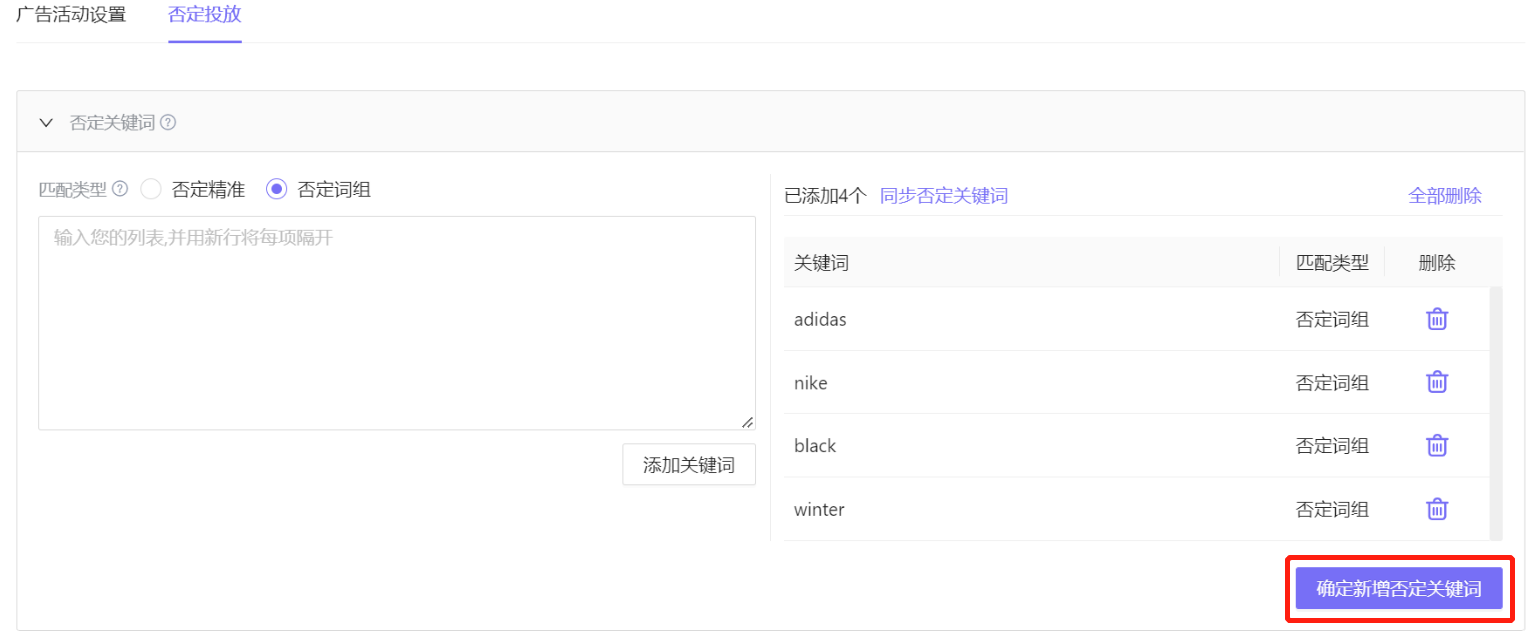 +
+
(Image source: Youmacloud -> Ad Campaigns Feature)
2. Regular Negative Targeting During Ongoing Ad Campaigns
After an ad campaign has been running for a period, you need to regularly download ad reports to check the data performance of targeting keywords/search terms, and perform routine negative keyword and negative ASIN operations.
Generally, ad reports need to be downloaded daily in the early stage of advertising, and at least once a week in the later stage. This shows that the frequency of negative keyword operations is very high.
However, Amazon's backend ad reports are numerous, and downloading and analyzing them is very troublesome. At this time, you can use Youmacloud's [Search Terms] feature to directly view and analyze user search terms matched to each ad group in each time period, identify high-traffic, non-converting keywords, and add them to negative targeting.
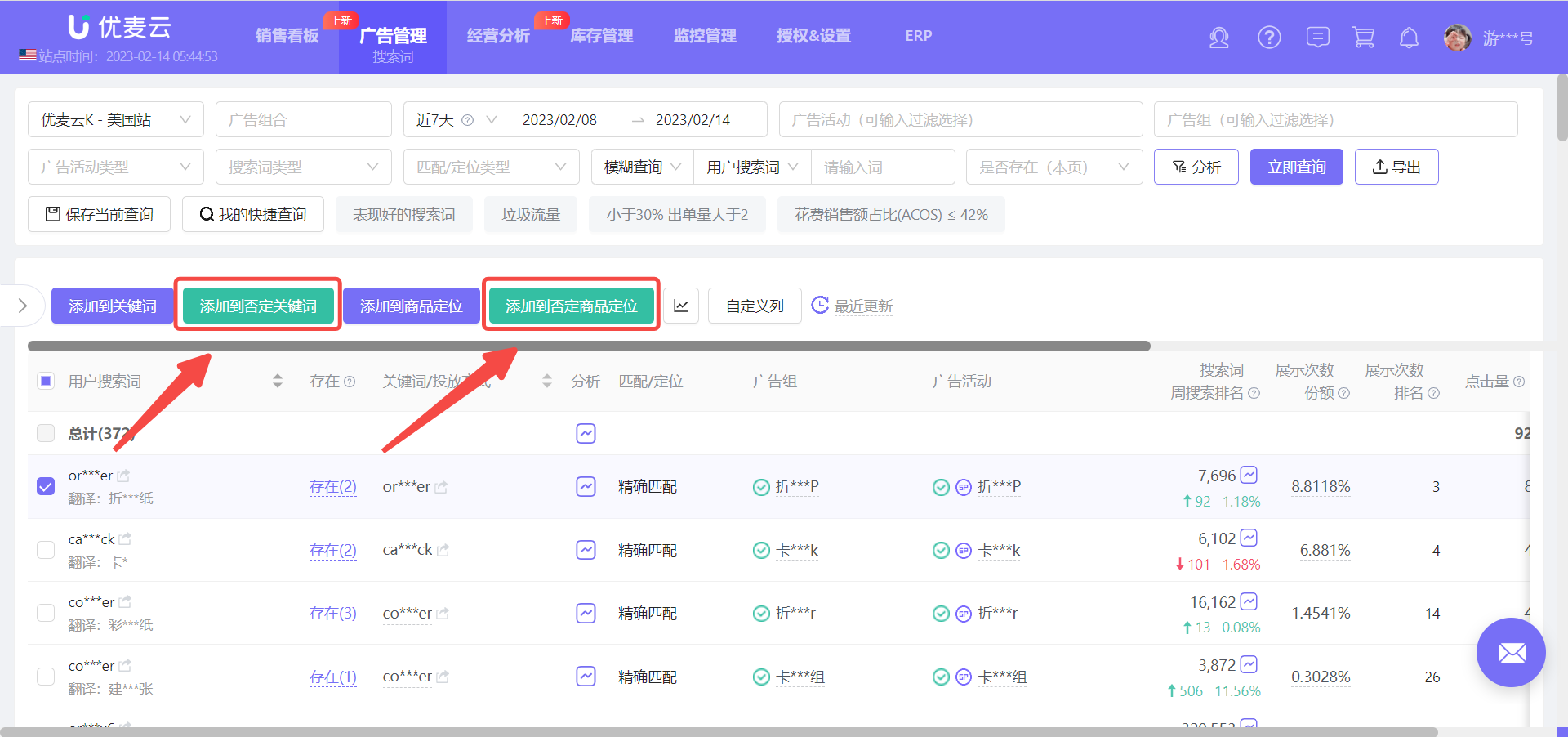 +
+
(Image source: Youmacloud -> Search Terms Feature)
Three Methods and Tips for Negative Targeting
1. Predictable Negative Keywords
Predictable negative keywords refer to analyzing and identifying, based on your own experience and Amazon's matching logic, some keywords that may be matched during ad placement but are not needed at the current stage. For example, Nike-related keywords mentioned earlier, and other keywords known to be irrelevant to the product, perform negative keyword settings.
In addition to the above methods, you can also use the following methods to research keywords, and proactively obtain high-traffic keywords that are irrelevant to the product to negate them in advance. You can also add them to your negative keyword library.
First, find relevant search terms through product core keywords. Open SellerSprite's keyword [Static Mining] tool, enter the product's core keyword, and mine relevant search terms for this keyword. These keywords are all real user search terms.
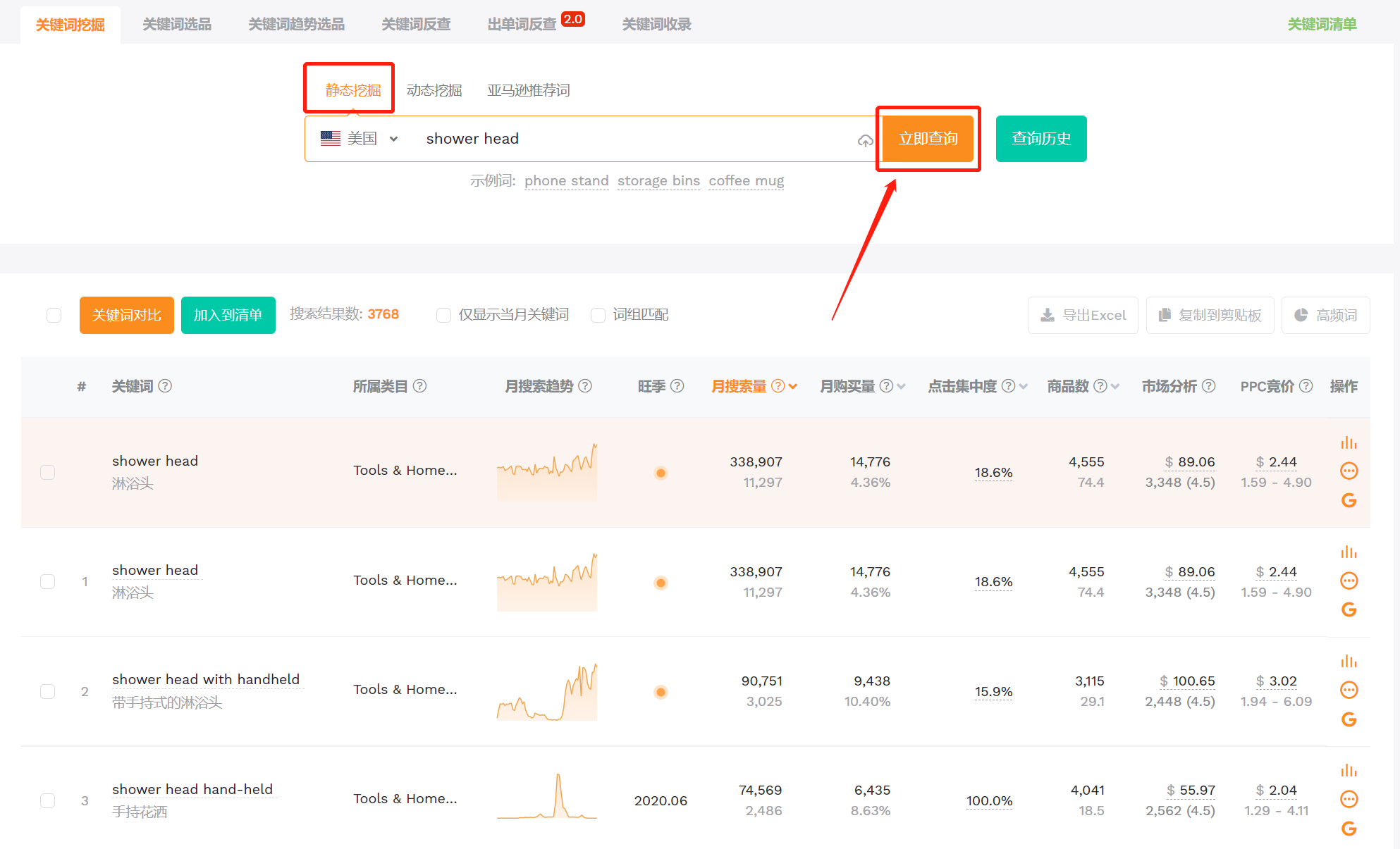 +
+
(Image source: SellerSprite -> Keyword Mining)
Then, based on the keyword images, identify keywords with high search volume but are irrelevant to the product, and add them to the corresponding ad negative targeting.
 +
+
(Image source: SellerSprite -> Keyword Mining)
2. Unpredictable Negative Keywords
This refers to keywords that we cannot know in advance, usually found in the search term report. For example, for sleeveless products in clothing, terms like "3/4 sleeve shirt" may appear, which are less relevant to the product and have low conversion rates. This requires timely adjustments and corresponding negations.
Common situations in search terms that can be negated:
- High Impressions + Low Clicks
- Low Impressions + Low Clicks
- High Impressions + High Clicks + Low Conversion + High ACOS
- Keywords or ASINs irrelevant to the product
Open Youmacloud's [Search Terms] feature, select the corresponding ad group, and set the range of metrics such as impressions, clicks, click-through rate, and orders to quickly identify the search terms that need to be negated, and add them to negative targeting with one click.
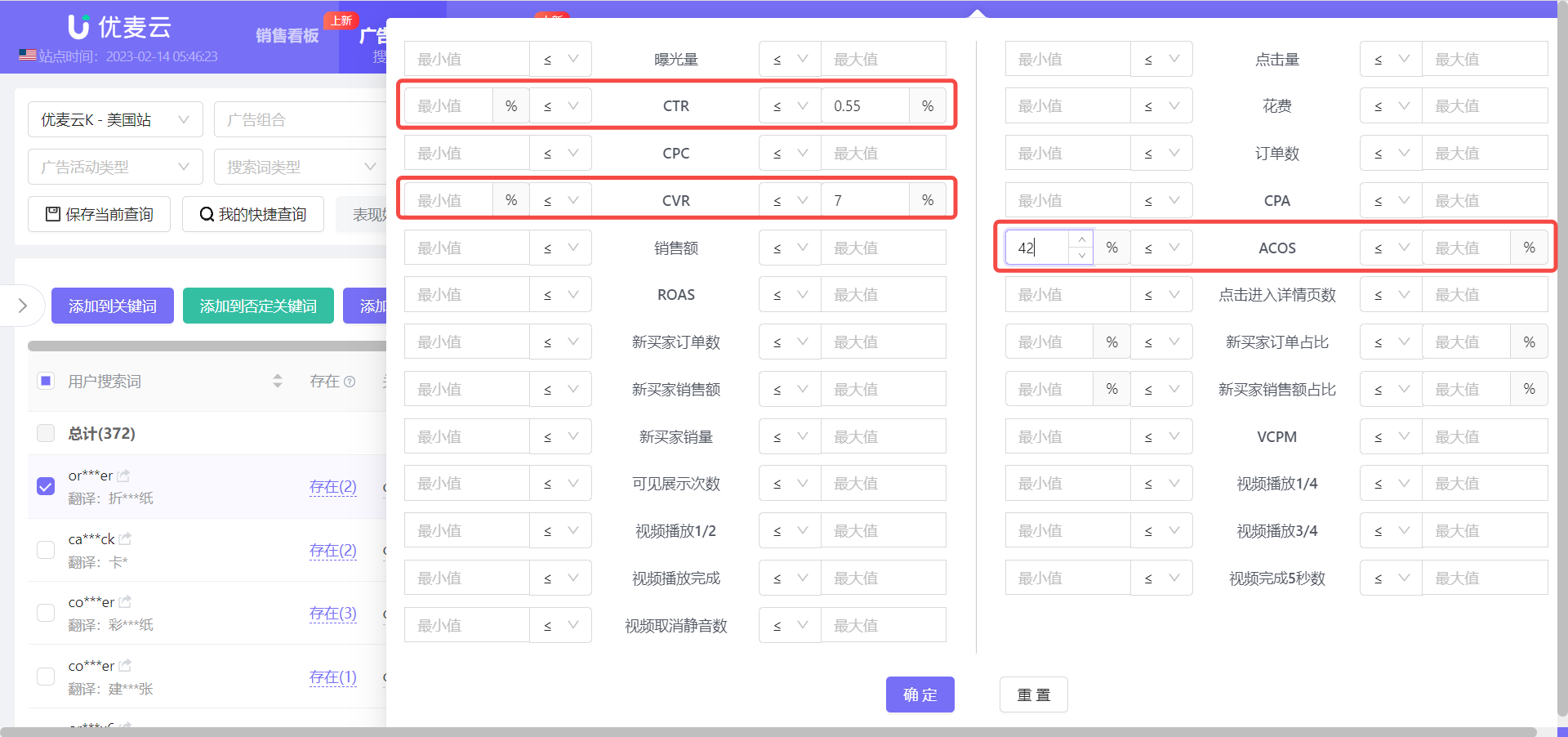 +
+
(Image source: Youmacloud -> Search Terms Feature)
3. Negative Keyword Techniques
3.1 Negative Targeting Techniques for Broad Keywords
When we have a new product without much competitiveness, we can focus on long-tail traffic. At this time, it is recommended to negate broad keywords and high-traffic keywords first.
For example: targeting the keyword women dresses (phrase match).
It has high search volume and relevance, but the market competition is too fierce. The probability of getting orders for this keyword is very low. At this point, you can add "women dresses" to exact negative keywords. The resulting search terms will be long-tail keywords of "women dresses", and there will be no "women dress" or "women dresses". The traffic will be smaller, but the probability of getting conversions will be higher.
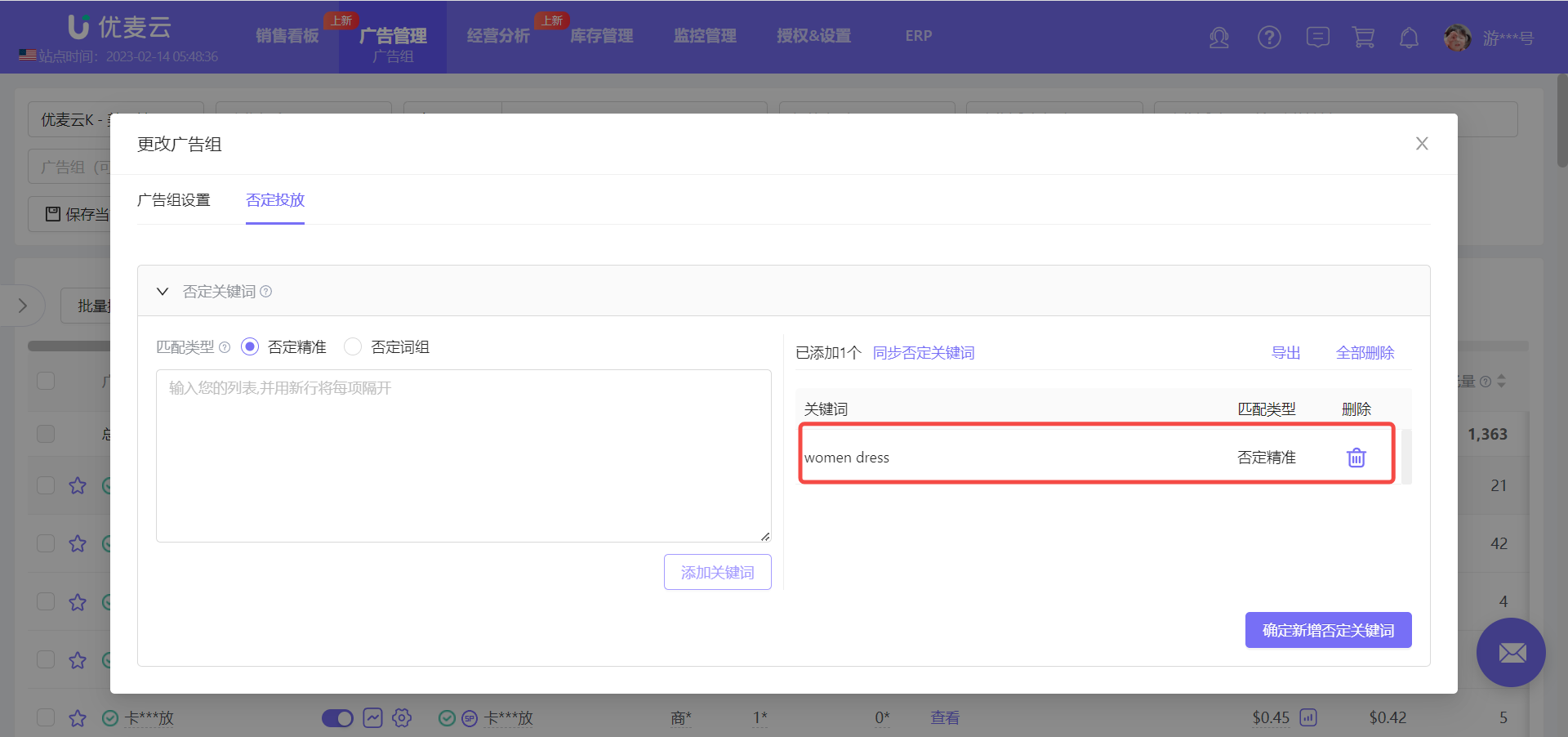 +
+
(Image source: Youmacloud -> Ad Groups Feature)
3.2 Negative Keyword Techniques for Keywords Containing Special Characters
On Amazon, when doing negative keywords, you often encounter search terms containing special characters such as "+, /, &", for example: 3/4 sleeve women dress. Due to Amazon's mechanism restrictions, it is not possible to add them successfully when adding negative keywords.
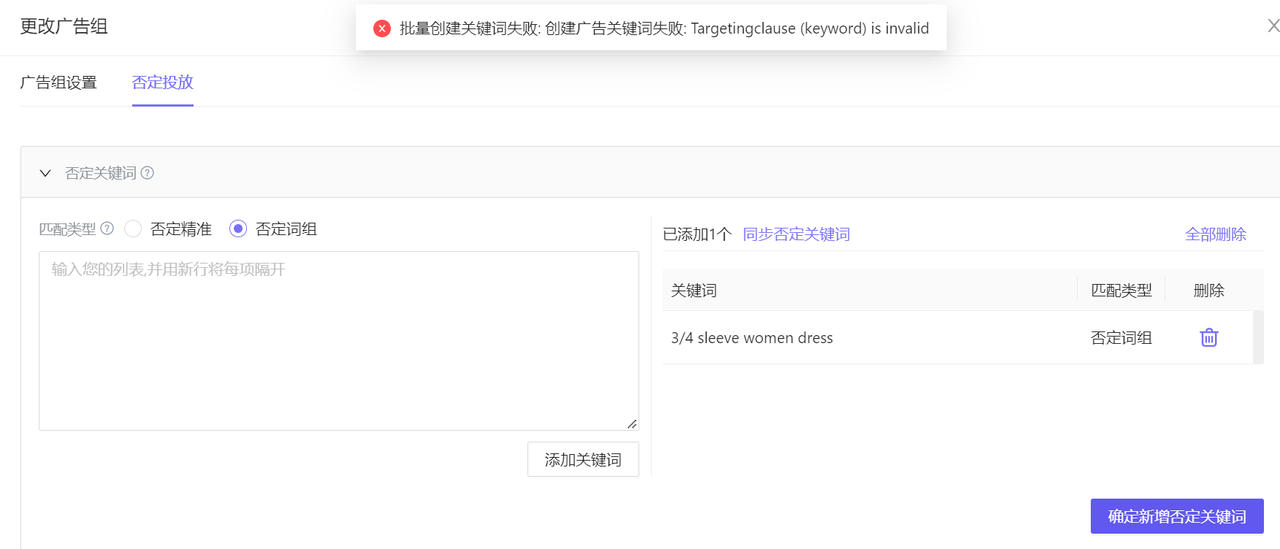 +
+
(Image source: Youmacloud -> Ad Groups Feature)
However, in the search term report, if you want to add terms like "3/4 sleeve women dress" to negative targeting, but cannot add them, what should you do?
Xiao You kindly reminds you that when you encounter special characters, you can replace the special characters with spaces. For example, "3 4 sleeve women dress" can be negated successfully.
The negative effect is consistent with that of keywords with special characters, that is: keywords related to "3/4 sleeve women dress" will not appear.
 +
+
(Image source: Youmacloud -> Ad Groups Feature)
Finally, before operating negative targeting, you must first have the concept of negative keywords and understand how to build a negative keyword library, and then perform corresponding negative keyword operations according to the ad placement goals.
Ad negative keywords are a long-term process, and you must regularly check and perform negative keyword operations. Moreover, when doing negative keywords, do not negate too aggressively, otherwise it will lead to a sudden reduction in impressions and affect conversions.

SellerSpace is a concise tool to manage multiple Amazon accounts, focuses on solving various problems encountered by sellers during operating Amazon business.
Mail:support@sellerspace.com
©2018-2025 SellerSpace.COM All Rights Reserved
Online
Service
